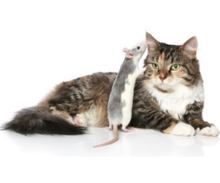
What you need to know to protect your pet.
NORMAL:
Your body and your pet’s body is designed to be in equilibrium. Nutrition (food) which is ingested is processed and utilized for specific purposes (e.g. breathing, running, healing), and the excess is discarded. Some of these processes create waste products which are eliminated by the body (e.g. pooping, peeing, breathing)
If our system becomes unbalanced illness and/or disease can occur.
When everything is working perfectly the active form of vitamin D is actually synthesized by your pet’s body but only when the skin is exposed to natural sunlight.
So… technically outdoor dogs and cats can synthesize ALL the Vitamin D that they need. The problem arises when our pets are on the sofa 23.5 / 7 — Thus most commercial pet foods supplement vitamin D out of necessity.
DOGS AND CATS ARE NOT PEOPLE:
Sunlight converts vitamin D2 to D3. (Vitamin D3 has a fancy name: cholecalciferol) the majority of supplements on the market today are D2. Labels may not clearly differentiate between D2 and D3. This is primarily because the supplements are manufactured for people and it for people doesn’t matter. D2 is less expensive.
TAKE HOME:
If your veterinarian recommends a supplement for your pet make sure it is vitamin D3, cholecalciferol not calciferol.
TOXICITY:
When an excessive amount of vitamin D Is consumed by your pet. The body’s normal elimination capacity is tapped out and cannot eliminate enough – fast enough. This results in an accumulation of calcium (yes, I said calcium) in the body tissues which becomes dangerous. Taking 60,000 international units (IU) a day of vitamin D for several months has been shown to cause toxicity.
SYMPTOMS OF TOXICITY:
Symptoms of toxicity include weakness, vomiting, nauseousness and appetite fluctuations. Eventually increased frequency of urination, and increased urine volume.
The urinary frequency that ensues during vitamin D toxicosis is a precursor to serious damage to the kidneys which is permanent and can be fatal.
USE AS A RODENTICIDE:
The kidney is a vital organ that can seriously be affected by too much vitamin D. The Vermin Control Industry has discovered the pharmacodynamics of this vitamin and is currently distributing a plethora of rodenticide products. These products contain toxic levels of vitamin D. Rodents who consume the vitamin D laden bait begin to rapidly deposit calcium in their tissues. This effectively turns their kidneys to stone, if you please — producing a dead rat. Our problems develop with primary or secondary exposure to the rodenticide. Cats and dogs are at severe risk for vitamin D toxicity and are threatened with serious or fatal kidney damaged when they consume the poison or a poisoned rodent.